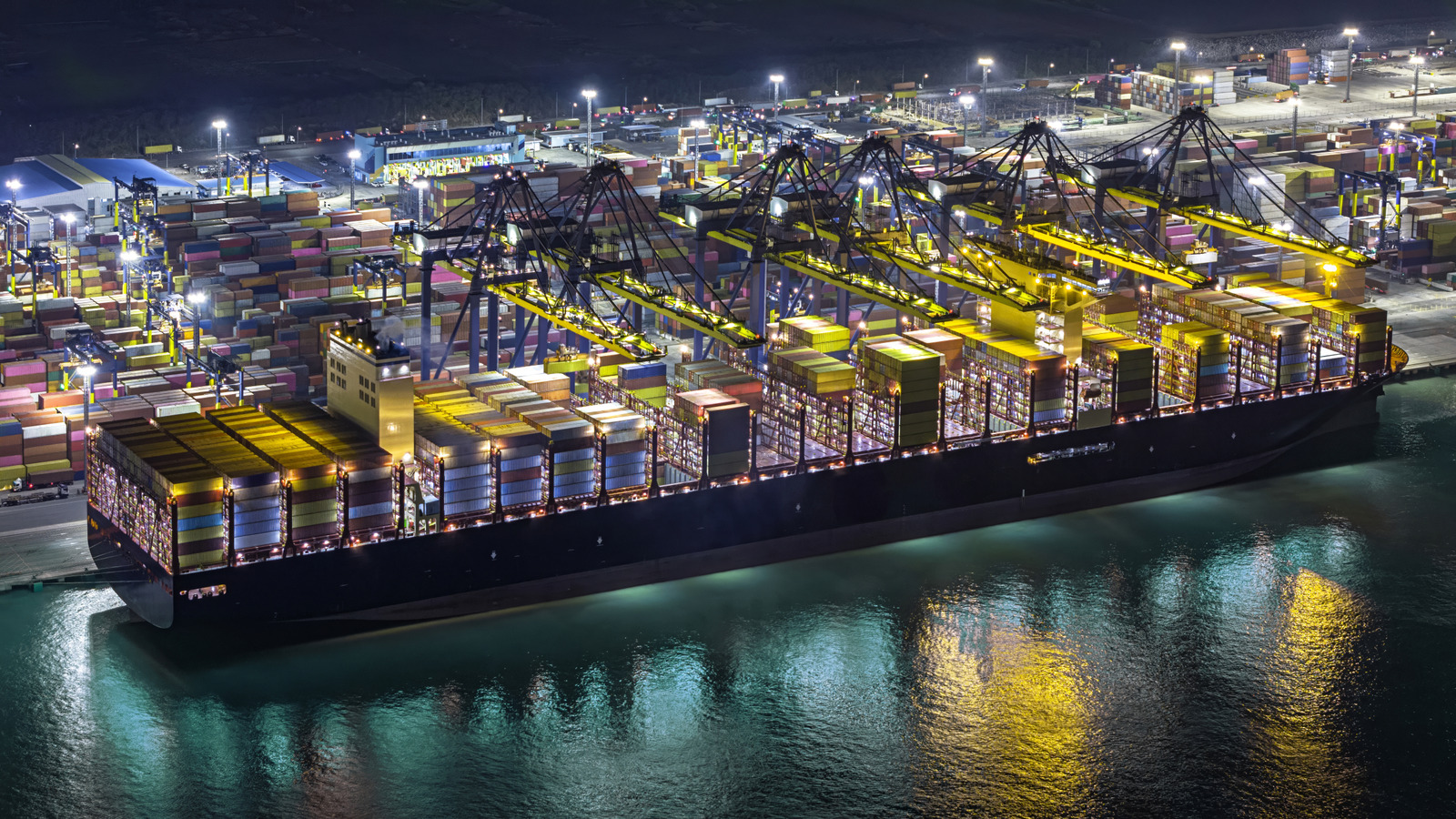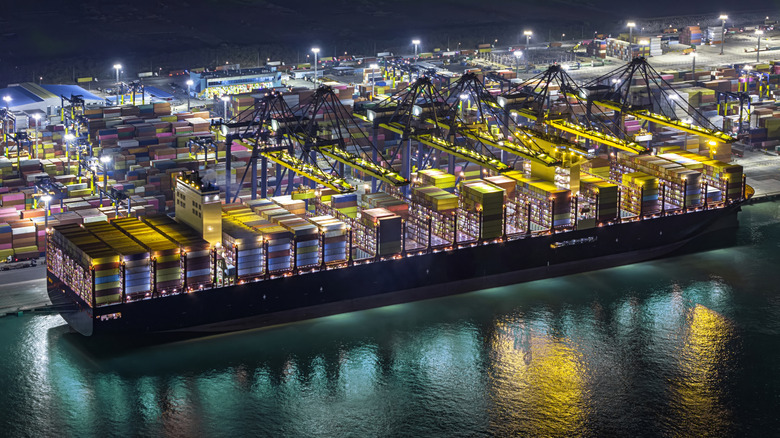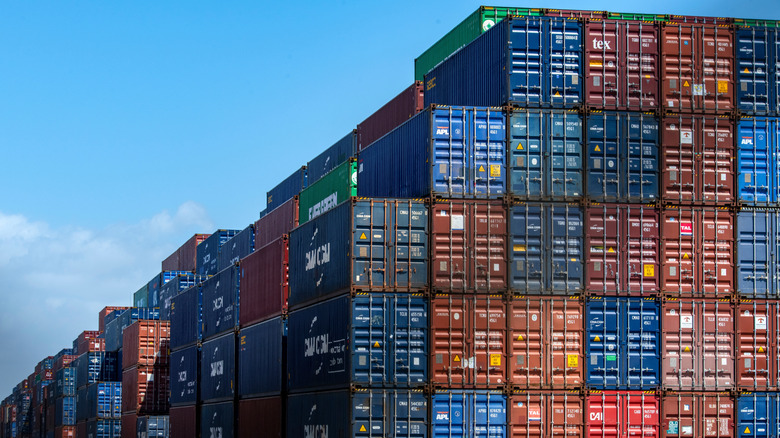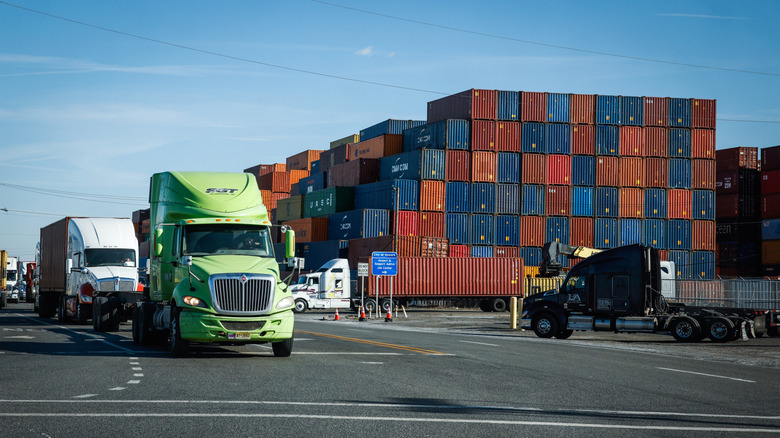For obvious reasons, Trump’s tariffs have grabbed a ton of attention lately. Turning the entire global economy on its head and ceding the U.S.’s position as a global economic leader tends to do that. As bad as tariffs are, though, they aren’t the only idea Trump has to make everything you buy even more expensive. While we were focused on what cars would disappear from the U.S. market now that they’re no longer affordable, Trump decided to also hit Chinese-built cargo ships with massive port fees. If those port fees go into effect as planned, expect shipping delays that will make the COVID era sound fun in comparison.
As Reuters reported in late March, Republicans’ current plan is to begin charging port fees of as much as $1.5 million on Chinese-built cargo ships at every port of call. They aren’t based on the value of the cargo that’s offloaded at each port, either, so while a ship that drops all its cargo at the Port of Los Angeles would pay a single port fee, a ship planning to stop at multiple U.S. ports would be charged the same fee at each stop. It’s a move that’s been pitched as a way to revitalize the U.S. shipping industry, but the Jones Act didn’t work, and it’s unlikely this will, as well.
The U.S. shipbuilding industry simply isn’t set up to build the kinds of giant cargo ships needed to replace Chinese-built ships, as it mostly builds ships for the Navy and supplying the few ships that supply U.S. ports in, say, Hawaii or Guam. While China’s shipyards produce more than 1,000 ships a year, U.S. shipyards build about 10. Even ignoring the higher cost of building ships in the U.S., it’s going to take a long time for U.S. shipbuilders to even begin competing with China.
Crowding major U.S. ports
To avoid stacking port fees, shipping companies will most likely begin avoiding smaller ports, and with less work to do, those ports will begin cutting jobs. Meanwhile, major ports will see massive increases in traffic, leading to long delays as demand overwhelms capacity. Some shipping companies may redirect their ships to Canada or Mexico and rely on trucks to bring their goods into the U.S., too. That would take some of the pressure off the major ports, but even assuming there are enough trucks to move product, that could easily create a logjam at the border, too.
As maritime news site gCaptain reports, the shipping industry is already preparing for the worst. At the Connecticut Maritime Association’s annual meeting last week, Port of New York and New Jersey port director Bethann Rooney said companies redirecting ships to major U.S. ports “would absolutely crush us” and that the ensuing delays “would be far worse than we saw on the West Coast during the (COVID-19) pandemic.” And as Morten Arntzen, a senior advisor to Macquarie Bank, told gCaptain, the shipping industry is unlikely to make the massive changes Trump, Republicans and even some Democrats are hoping for. Instead, Arntzen said they’re more likely to gamble that, come 2029, the new president will simply reverse the new rules.
Abandoning the U.S.
The Trump administration also appears to be operating under the assumption that shipping companies will still service U.S. ports. Another recent gCaptain article, however, shows that isn’t exactly guaranteed. They quote Genco Shipping & Trading Ltd. CEO John Wobensmith, who said in a recent interview on Bloomberg Television that the company currently owns zero U.S.-built ships but doesn’t even really need U.S. business. “What we are doing is we will either position our ships elsewhere, there’s plenty of global trade,” Wobensmith told Bloomberg, adding that only about 10 percent of its revenue comes from the U.S.
Like tariffs, it won’t be other countries or even the shipping company that ultimately pays for the higher cost and longer shipping times the new rules will impose. Instead, it’ll be the consumers. As Wobensmith put it, “The other way to handle this is passing through to the end user,” while also claiming freight rates “will go up, no matter what.” In turn, that will hurt U.S. farm owners who export a large percentage of their crops. Wobensmith said soy, especially, is in trouble since, between higher tariffs from countries responding to the U.S.’s trade war and higher freight rates, their prices will become “uncompetitive in the world market, so their exports will come almost to a grinding halt.
That does sound bad, but at least the farm owners can likely expect some sort of relief from Republicans. The people forced to pay even higher prices for products they have to wait even longer to receive won’t get a bailout, though, nor will the workers who lose their jobs because shipping no longer goes through smaller ports.





